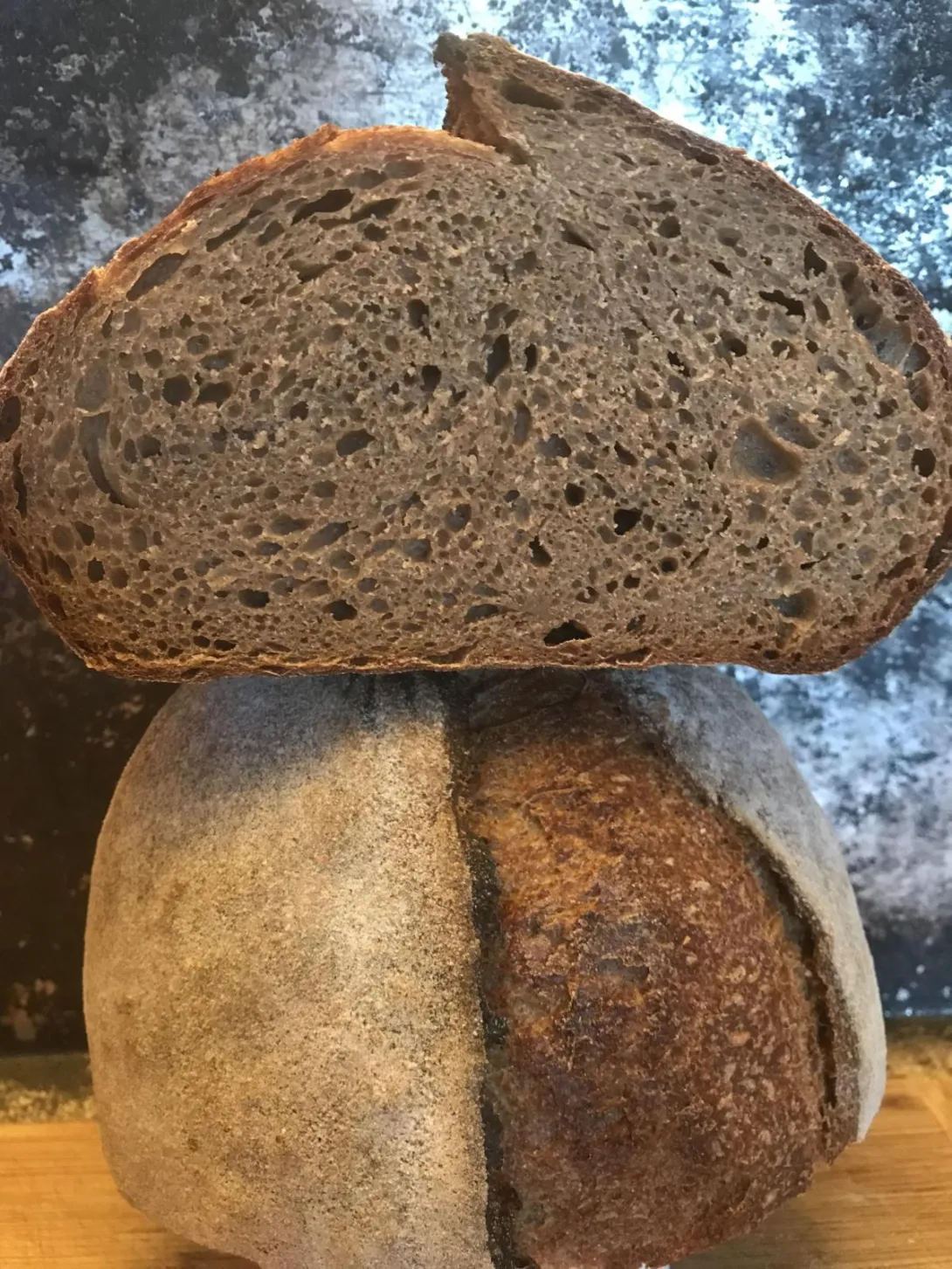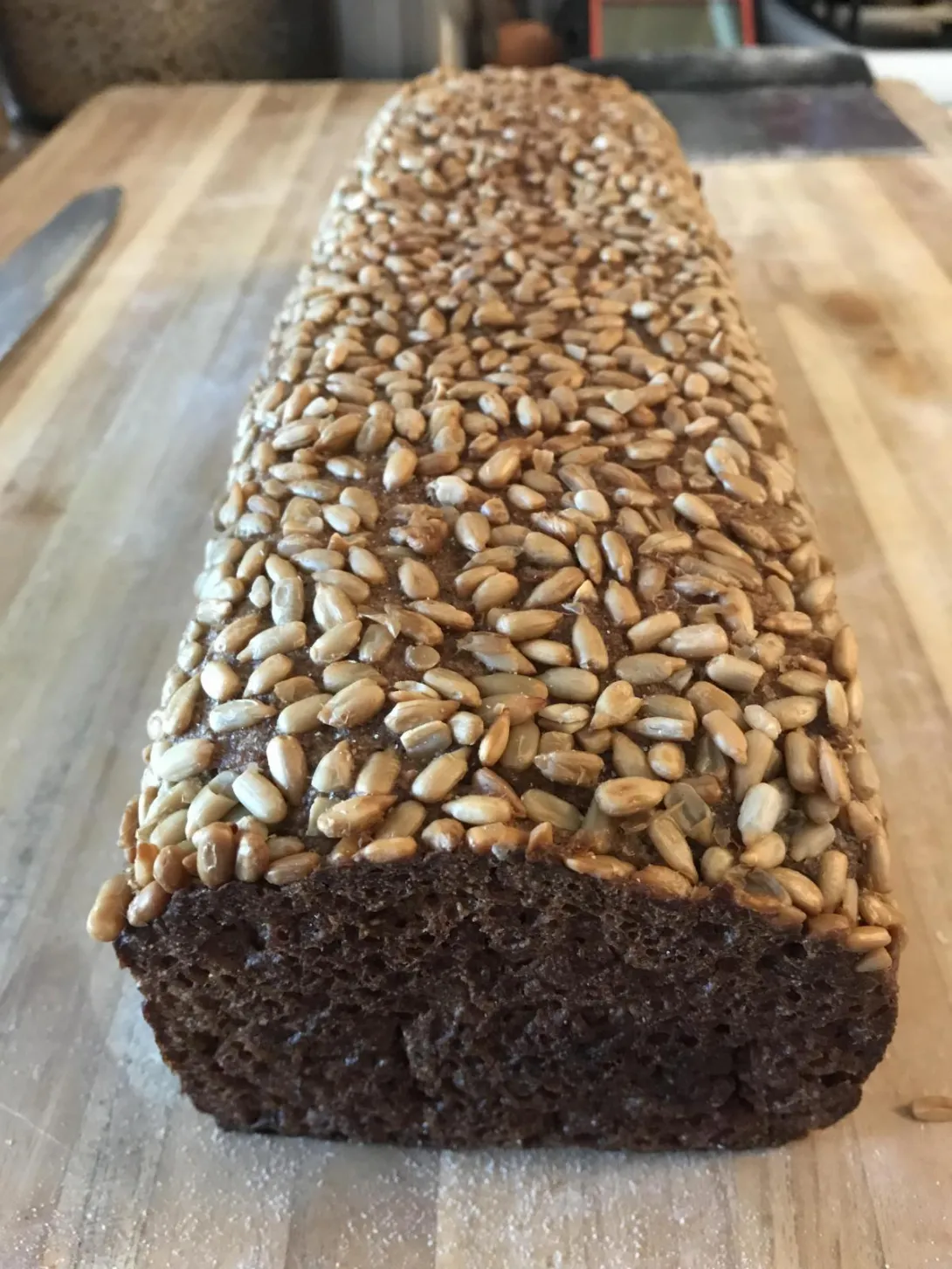(ruis)reikaleipa
I stopped by the Grow NY grain stand at the local farmers market and picked up the lone bag of Frederick soft white wheat berries they had and a few bags of stone-ground flour from Farmer Ground and Small Valley Farm so I could sample some local wheat varieties and try a few bakes with professionally milled whole grain flour for comparison with Mockmilled flour. Larger bags of wheat berries can be ordered for pick up in advance. I am interested in the Renan flour, but a 50 lb minimum is a bit intimidating. If someone in the NYC area is interested in splitting an order plea




